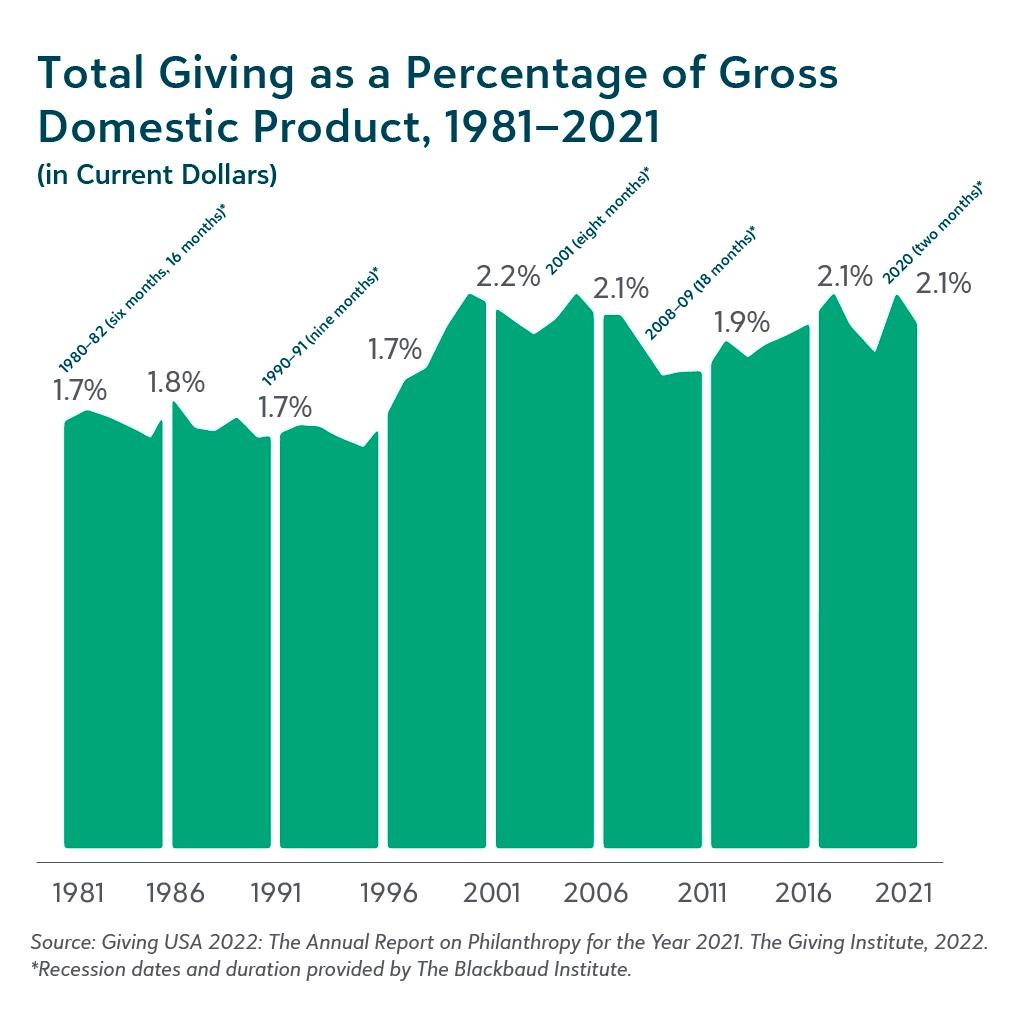Planning Social Impact During a Recession
It’s hard to believe that we are already approaching the end of 2022. As many CSR professionals begin to turn their eyes toward planning their programs for next year, there is a rather large and looming elephant in the room- the recession.
One thing that is certain in these uncertain economic times is that employee engagement is impacted. Regardless of your organization’s financial fortitude, people react to the red flags being raised by economists. From company leadership looking to tighten budgets to individual employees cutting costs, these preventative measures can translate to dialing back CSR efforts- but they shouldn’t.
Time and time again, corporate social responsibility has proven to bolster company image, positively impact the bottom line, and help employees and communities feel more connected and engaged. We’ve gathered some of our favorite proof points on the benefits of CSR programs and ideas on how to continue to engage employees when spending, including charitable donations, inevitably declines due to the recession.
Giving Trends – Philanthropy Through a Recession
Cutting spending is a clear-cut decision for individuals during economic uncertainty. According to the Blackbaud Institute’s newest report, Philanthropy Through Recession, giving trends during recessions paint a clear picture – charitable giving goes down, at least temporarily.
According to research from Giving USA, when looking at the average of three to four years inflation-adjusted charitable giving is back up to pre-recession levels. “Between 2008 and 2019, giving increased by $77 billion, from nearly $350 billion in 2008 to $427 billion in 2019. The Great Recession ended in 2009, and yet for the following decade, from 2010 to 2019, the total growth in inflation-adjusted giving was 33%. Giving in 2019 reached nearly $450 billion.” –the inflation-adjusted giving was 33%. Giving in 2019 reached nearly $450 billion.” – Blackbaud Institute Report

This information is important to keep in mind when planning your CSR programs for 2023 and beyond. You can now take action to keep building momentum in employee engagement while being cognizant that employees might be cutting down their charitable giving spending.
3 Tips for Employee Engagement
1. Use the Pandemic as a Case Study
We know that many companies had to pivot and react quickly to the changing needs of their employees and communities throughout the pandemic. Research on how employees feel about their company’s response to the impacts of the pandemic shows that
85% of employees consulted about their company’s CSR program said they were proud of their company’s reputation.
Continue to put collaboration at the forefront and gather employee feedback. Giving employees a voice in your company’s grantmaking initiatives is a great way to keep them engaged, even if they don’t have the capacity to give their own money. Employee nomination grant programs will encourage collaboration in your company’s community investment strategy.
Resources
-
Guide: Corporate Grantmaking Programs
-
Infographic: Building the Business Case for Social Responsibility
2. Make Employees Your Number One Stakeholder
Make sure your programming has a strong focus on your employees. That might sound obvious, but previously corporate social responsibility was understood to be a company’s involvement in philanthropy and other external efforts. However, there are so many ways to prioritize employees with your CSR strategy.
Employee assistance funds are rich with benefits and can give your employees a chance to support one another through hardships. E4E Relief conducted research during the pandemic to show the positive impacts of employee relief grants on emotional well-being, financial well-being and overall employee satisfaction. Checkout the resources we’ve linked for connecting CSR to your HR strategies and providing employee relief.
Resources:
-
Whitepaper: Elevating Employees as Your Number One Stakeholder
-
Blog: Impacts of Employee Relief Grants
-
Online Resource Guide: Creating an Employee Assistance Fund
3. Renew Focus on Volunteerism
Employee volunteerism has multiple benefits that contribute to employee engagement from leadership development to improving mood and reducing stress levels that lead to employee well-being and belonging at work.
As nonprofits start to restructure and reallocate resources, volunteering will provide for needs that cannot be met through fundraising. Consider partnering with local nonprofits to provide more skills-based volunteering like bookkeeping, IT support, or administrative and marketing support that they would otherwise need to pay for. There are so many ways for employees to get involved and make a material impact on the causes they care about.
Remember, time is money. Dollars-for-Doers can be a great way to show your company’s support for employees that spend their time volunteering. These programs give them the opportunity to earn dollars for their favorite causes. Consider increasing the dollars rewarded or lowering the hour thresholds for your current programs. If you don’t have a dollars-for-doers program in place already, now is a great time to explore this option!
Resources:
-
Online Guide: Employee Volunteering
-
Blog: Top 3 Volunteer Needs
-
bbcon session: Re-energizing Employee Volunteerism
In his 2022 Annual CEO Letter, Larry Fink said “It’s never been more essential for CEOs to have a consistent voice, a clear purpose, a coherent strategy, and a long-term view. Your company’s purpose is its north star in this tumultuous environment.”
The theme of the past few years really can be described as tumultuous, and the impending recession is no exception to this guidance. CSR can, and should be, a bright beacon throughout hard times, not a light you dim to cut costs.